Student file of Henry Roman Nose, a member of the Cheyenne Nation, who entered the school on October 6, 1879 and departed on September 18, 1883. The file contains newspaper clippings, a letter, former student response postcards, a returned student survey, and a report after leaving. The file indicates that Roman Nose was farming in Bickford,…
Roman Nose, Henry
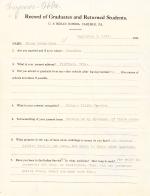
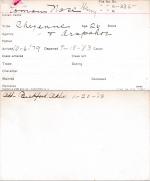
Student information card of Henry Roman Nose, a member of the Cheyenne Nation, who entered the school on October 6, 1879 and departed on September 18, 1883. The file indicates Roman Nose was living in Bickford, Oklahoma in 1913.

Student information cards of Henry Roman Nose (here just Roman Nose), a member of the Cheyenne Nation, who entered the school on October 6, 1879 and ultimately departed on September 18, 1883.
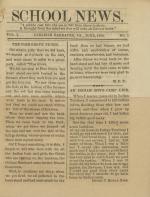
The first article by M. D. P. [Mason D. Pratt] describes a field trip to an iron forge near Pine Grove, followed by a picnic at the grove with the students, teachers, visiting chiefs, the college band and some invited guests. “An Indian Boy's Camp Life,” by Henry C. Roman Nose, gives a short account of his activities growing up. An "Editorial"…
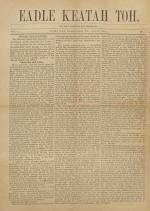
Page one had an article on the benefits all children of the Sioux Nation receive from the agency, and how adult should have the opportunity to learn English as well. There was statistics on the number of children attending, and the ratio of boys to girls. Page two had a piece about the student’s reaction to a camping trip. Many of them reacted…
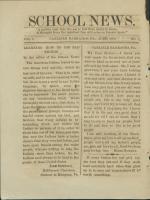
The first article is by John Downing (Cherokee), titles “Learning How to Use Bad Things.” In which he writes about alcohol and the benefits of being nice to the people of the United States, and a letter from Moses Nonway to his mother asking on the health of his people and reflecting on their poverty. The next page contained a list of small…
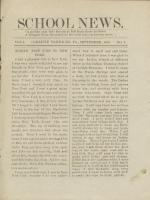
The opening piece was written by Roman Nose, titled “Roman Nose Goes to New York,” and it tell of his trip to New York City, visiting the Equitable Life Insurance Building and the aquarium, and the follows few weeks after his trip. He was one of the students who went on the Warm Springs trip mentioned in the previous issue. The following page…
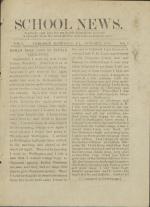
The fifth issue opens with Roman Nose describing his trip back to Indian Territory and his reunion with his family. While there he expresses his enjoyment of the school and the benefits of education, eventually convincing the chiefs to sends twenty-one Cheyenne children and Ten Arapahoe children with him to Carlisle. The article continues onto…
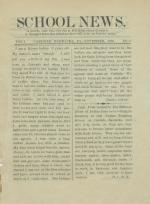
The first page has a short narrative from Joshua Given (Kiowa) on how he went from living in Indian Territory to studying at Carlisle and a brief paragraph from H.C. Roman Nose on how well and enthusiastically the students are learning. The editorial was about how smart Indians started to learn how to live like white men, and how thankful the…
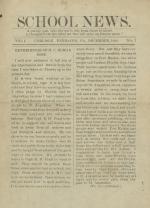
Issue Seven opens with Roman Nose explaining how he came to Carlisle after being held captive in St. Augustine for three years. He explains his time there was good because of the kindness of Capt. Pratt. After the editorial about the benefits of speaking English, there was a small letter from a Sioux boy named Phillip, to show how “large boys…
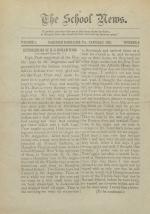
Issue Eight opens with a continuation of Henry C. Roman Nose’s journey from St. Augustine, to New York city and eventually Tarrytown, New York. The next page was an editorial on the importance of Hard Work, and how Indians should strive to work hard like White men do, along with a series of little blips about the school, including the arrival…
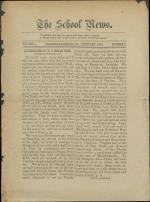
Issue nine, continues Roman Nose’s story, showing him attending Hampton School and eventually traveling to Lee, Ma. This issue’s editorial featured a piece on the hopes that the new U.S. President Garfield will put all Indian children in school. On the same page Robert W. Stewart (Creek) wrote about George Washington’s birthday. A bit about…
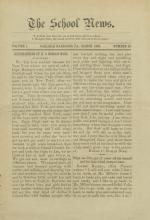
It opens with the conclusion to Roman Nose’s long journey to Carlisle. He explained how at Lee he learned to mow with a scythe and milk cows, before travelling to Carlisle Barracks, where he was happy to see other Indians following the “white man’s way”. Also on the first page is a small bit from Sophie Rachel (Nez Perces) on how she learned to…
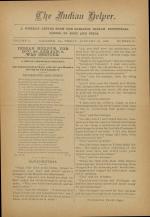
The first page opened with a notice that there were no Indian Helper newspapers published for December 28 and January 3rd. A notice followed: “A Novel Christmas Present: Our Superintendent Made with his own Hands a tin Cup for Each Employee.” Next was a poem, by “E.G.“dated Dec. 25, ’89 titled “The School Poet Again Stirred” about…
![Former Fort Marion prisoners at the Carlisle Indian School [version 1], c.1879 Former Fort Marion prisoners at the Carlisle Indian School [version 1], c.1879](/sites/default/files/styles/views_taxonomy/public/image-photo/Potamkin%20%2323%20%28Choate%20%2328%29%20Full%20040.jpg?itok=i8gRGEsS)
Portrait of White Bear, Zonkeuh, Koba, Henry Roman Nose, Little Chief, Charles Oheltoint, Etadleuh Doanmoe, and White Man posed on the grounds of the school.
![Fort Marion prisoners at the Carlisle Indian School [version 2], c.1879 Fort Marion prisoners at the Carlisle Indian School [version 2], c.1879](/sites/default/files/styles/views_taxonomy/public/image-photo/CIIS%20RG099s%20B1.4%20cropped.jpg?itok=IdQP8Dji)
Portrait of White Bear, Zonkeuh, Koba, Henry Roman Nose, Little Chief, Charles Oheltoint, Etadleuh Doanmoe, and White Man posed on the grounds of the school.

A posed group of male students in the Carlisle Indian School tin shop with their instructor and Richard Henry Pratt. They are, from left to right: Charles Oheltoint, Richard Henry Pratt, Henry Roman Nose, Paul Black Bear, J.H. Curtain (instructor), Ernest, and Koba.
The Cumberland County Historical Society has two copies of this image:…
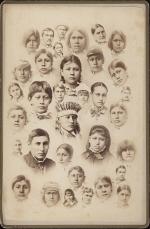
The printed note on the reverse side reads: OUR BOYS AND GIRLS At the Indian Training School, Carlisle, Pa.
1. White Buffalo, Cheyenne, I. T.
2. Mittie Houston, Wichita, I. T.
3. Samuel Townsend, Pawnee, I. T.
4. Nancy Renville, Sisseston Sioux, D. T…
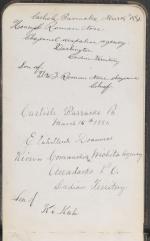
A description of this item is not currently available.
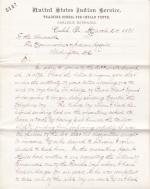
Richard Henry Pratt informs the Commissioner of Indian Affairs that due to Curtits' bad health, he has sent Curtis home with Roman Nose as a guardian, rather than wait for Bear's Heart to accompany him. Roman Nose was requested to return home by the Indian Agent L. J. Miles.

Richard Henry Pratt requests permission to allow Henry Roman Nose to travel to Carlisle at no expense to the government to spend six months at Carlisle learning the tinsmithing trade.
